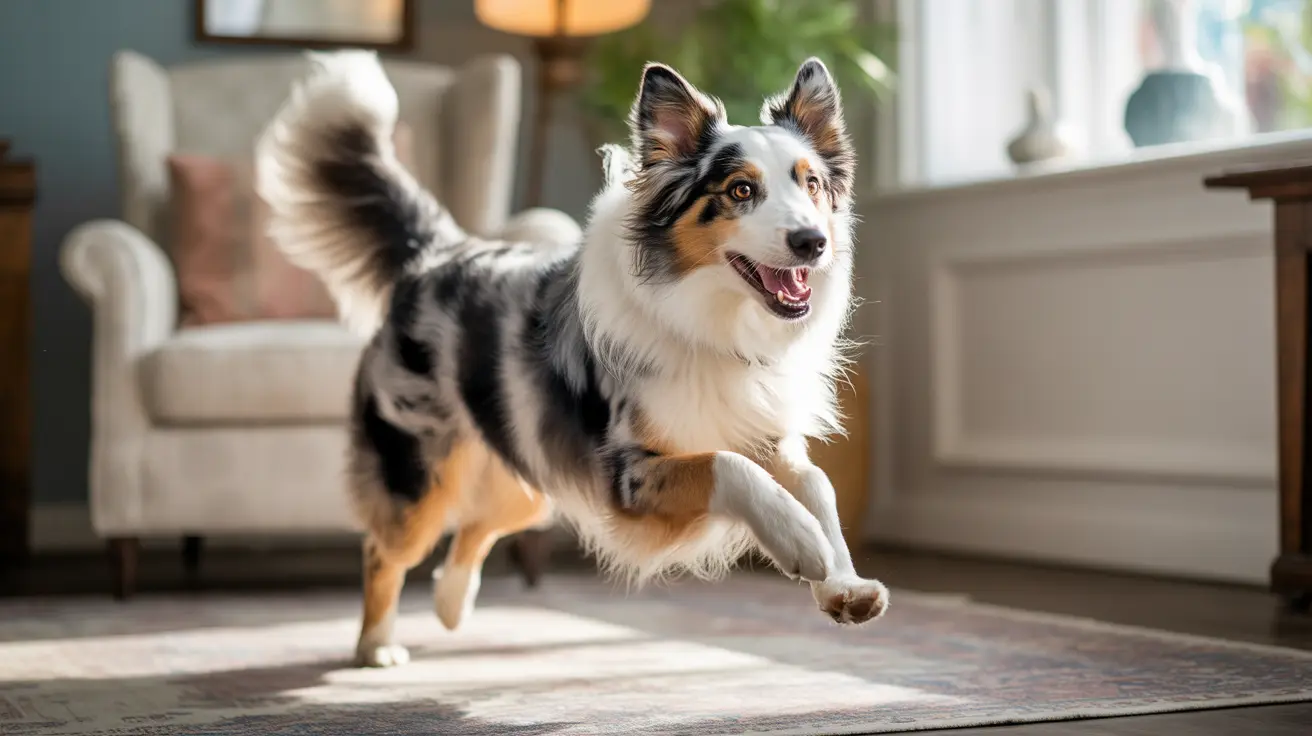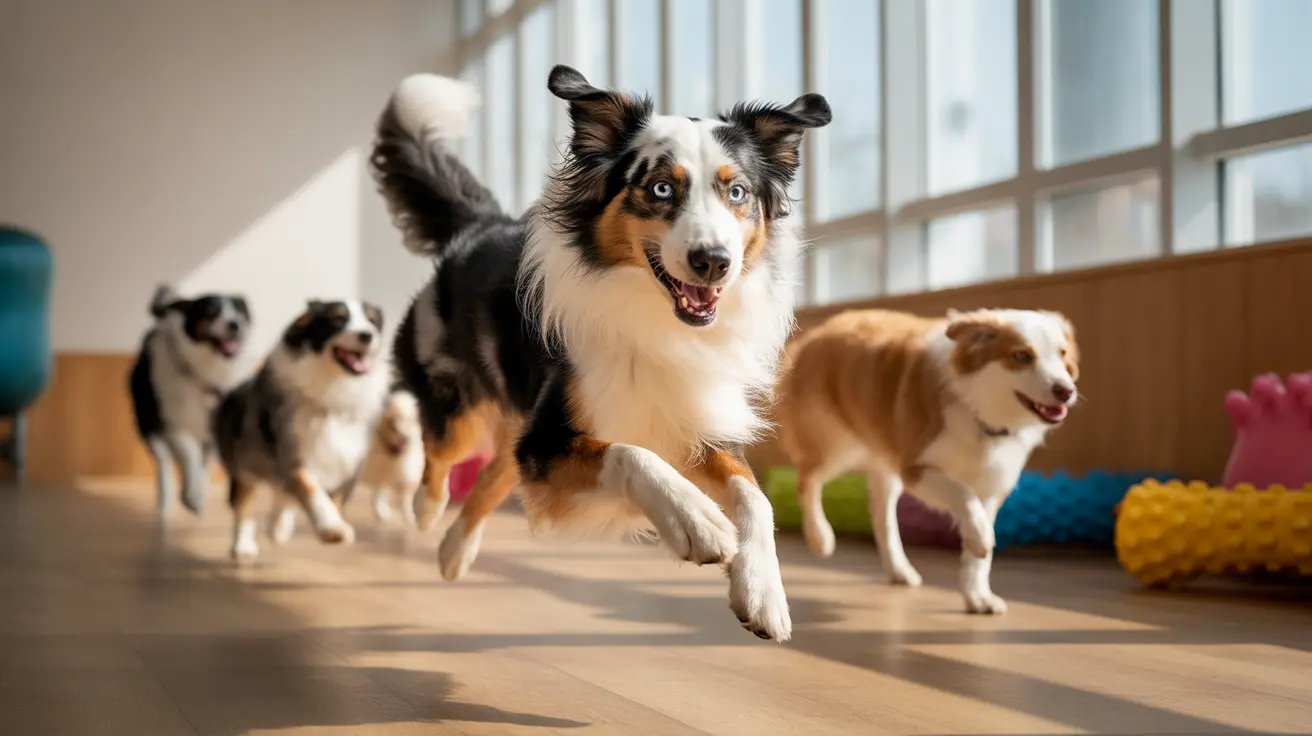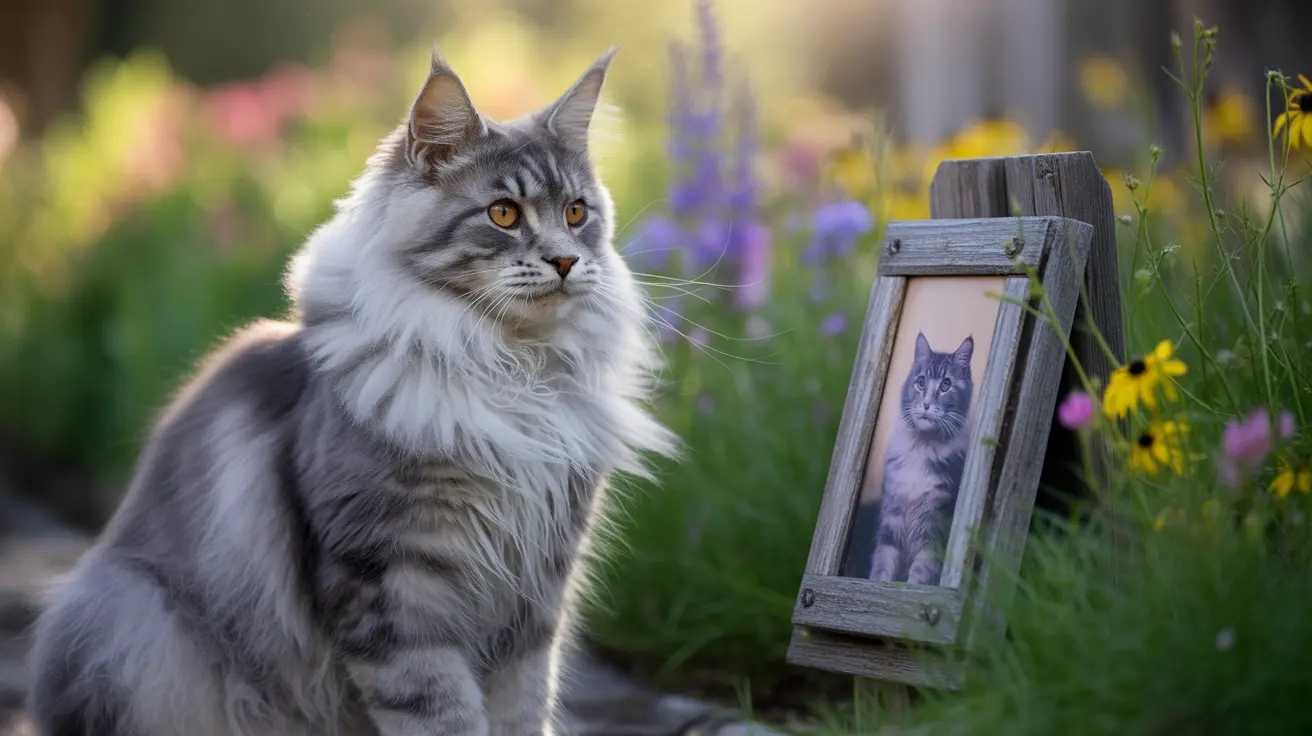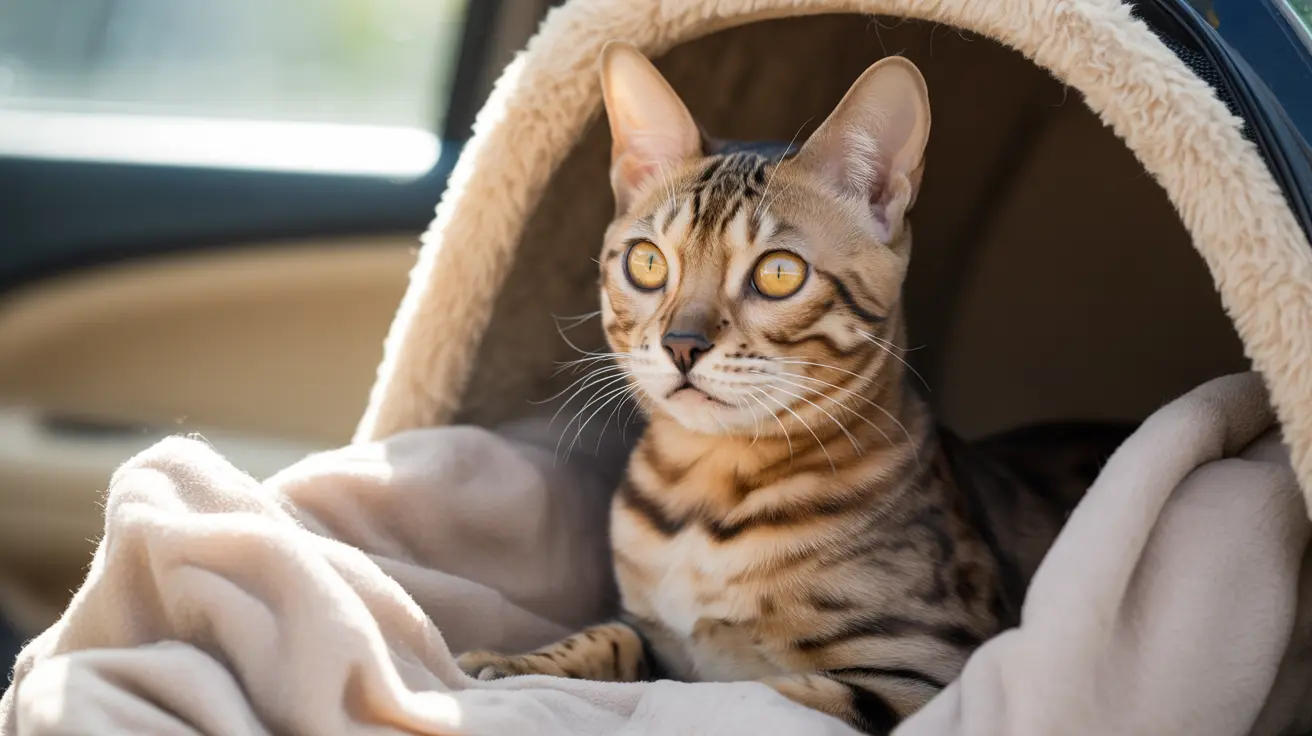The Science Behind Canine Bonding in Multi-Person Households
If you've ever noticed your dog gravitating toward one particular family member, you're not alone. In multi-person households, dogs consistently demonstrate clear preferences for specific individuals, often forming their strongest emotional bonds with just one or two people. This phenomenon isn't random—it's the result of complex psychological and behavioral factors that influence how dogs choose their favorite person.
Understanding how dogs select their preferred human companions can help families create stronger bonds with their pets and ensure every household member develops a meaningful relationship with their four-legged friend. Whether you're hoping to become your dog's number one person or simply want to strengthen your existing bond, the science behind canine attachment reveals practical strategies that work.
The process of how dogs choose their favorite person involves multiple factors including early socialization experiences, quality of attention received, positive associations formed, and personality compatibility between dog and human. By recognizing these key elements, dog owners can actively participate in building the deep, trusting relationships that make pet ownership so rewarding.
The Psychology Behind Canine Attachment
Dogs are inherently social animals that naturally organize humans into a hierarchical structure, much like they would with other dogs in a pack setting. This instinctual behavior explains why dogs consistently choose specific people as their primary attachment figures. The selection process isn't arbitrary—it's based on which humans provide the most security, consistency, and positive experiences in their daily lives.
The psychological foundation for how dogs choose their favorite person stems from their need to feel safe and secure within their environment. Dogs gravitate toward individuals who make them feel protected and understood, often selecting the person who best reads their body language and responds appropriately to their emotional needs. This creates a feedback loop where positive interactions strengthen the bond, making the chosen person even more appealing to the dog.
Personality compatibility plays a crucial role in this selection process. Dogs tend to choose humans with complementary energy levels and temperaments. Cautious dogs naturally gravitate toward quiet, calm individuals, while high-energy dogs prefer active people who match their enthusiasm. This compatibility extends beyond energy levels to include how humans handle stress, communicate, and interact with the dog during both positive and challenging situations.
The Critical Socialization Period
The first six months of a dog's life represent the most crucial period for determining future bonding patterns. During this key socialization window, puppies' brains are incredibly receptive to new experiences, and their early social interactions influence their attachment preferences for the rest of their lives. Dogs who receive consistent care from one person during this period often develop their strongest bonds with that individual.
Early socialization experiences create lasting impressions that shape how dogs choose their favorite person later in life. Puppies who are primarily exposed to one gender, age group, or personality type may find it more challenging to bond with different types of people as adults. For example, a puppy raised mostly around men might initially be hesitant to form strong bonds with women, though proper continued socialization can overcome these early limitations.
The importance of this critical period explains why many dogs maintain lifelong preferences for their primary puppy caregiver, even when other family members provide equal or greater amounts of daily care. However, continued socialization throughout a dog's life through experiences like doggy daycare, play dates, and regular exposure to various people helps maintain flexibility in forming new bonds and strengthening existing relationships.
Building Positive Associations
Dogs form their strongest attachments to people who consistently provide positive experiences and fulfill their basic needs for safety, comfort, and enjoyment. The concept of positive association is fundamental to understanding how dogs choose their favorite person—they naturally prefer individuals who are linked with good things happening in their lives.
The person who regularly provides meals, treats, walks, and playtime often becomes a strong contender for favorite status. However, it's not just about meeting physical needs—emotional fulfillment matters equally. Dogs bond most strongly with humans who engage them in activities they enjoy, whether that's playing tug-of-war, going for adventures, or simply providing calm, comforting presence during stressful situations.
Negative associations can just as powerfully influence how dogs choose their favorite person by creating avoidance behaviors. Individuals who are associated with unpleasant experiences like loud noises, rough handling, or stressful situations may find themselves lower on the dog's preference list. This explains why dogs might avoid certain family members who, despite good intentions, have been linked with negative experiences in the dog's mind.
Quality Time and Attention
The amount and quality of one-on-one attention significantly influences how dogs choose their favorite person. Most dogs bond strongest with whoever gives them the most focused, meaningful attention rather than simply being present in the same space. Physical affection through petting, grooming, and massage sessions helps solidify these bonds by releasing feel-good hormones in both dogs and humans.
Spending at least 30 minutes of focused, interactive time daily with a dog dramatically increases the likelihood of becoming their preferred person. This dedicated time should exclude passive activities like watching television together and instead focus on engaging activities such as training sessions, interactive play, grooming, or structured bonding exercises that capture the dog's full attention.
The quality of attention matters more than quantity for many dogs. A person who provides brief but highly engaging interactions throughout the day often outranks someone who spends more total time but offers less focused attention. Dogs can distinguish between distracted, half-hearted interactions and genuine, enthusiastic engagement, responding more positively to humans who are fully present during their interactions.
Recognizing the Signs: Is Your Dog's Favorite Person You?
Dogs communicate their preferences through consistent behavioral patterns that make it relatively easy to identify their favorite person. The most obvious sign is the "velcro dog" behavior, where your pet follows their preferred human everywhere, from room to room, often positioning themselves as close as possible to their chosen person.
Physical positioning provides clear evidence of preference. Dogs typically choose to rest next to, on, or touching their favorite person when multiple family members are present. They also demonstrate preferential greeting behaviors, showing more enthusiasm and excitement when their preferred person returns home compared to their reactions to other household members.
During stressful situations, dogs consistently seek comfort from their favorite person, ignoring other available family members. This behavior extends to bedtime choices, play initiation, and attention-seeking behaviors. Dogs also demonstrate selective listening, responding more quickly and reliably to commands from their preferred person while potentially showing "selective hearing" with others.
Breed-Specific Bonding Patterns
Different dog breeds exhibit varying tendencies in how they choose their favorite person, influenced by centuries of selective breeding for specific traits and purposes. Some breeds, including Basenji, Greyhound, Shiba Inu, and Cairn Terrier, are naturally inclined to form intense bonds with a single person, making them more likely to have one clear favorite rather than distributing their affection among multiple family members.
Herding breeds often demonstrate strong single-person bonding tendencies, reflecting their historical role of working closely with one handler. These dogs may form particularly intense attachments and can be more prone to separation anxiety when separated from their chosen person. Understanding these breed-specific traits helps families set realistic expectations and develop appropriate bonding strategies.
Companion breeds, originally developed to be family pets, typically show more flexibility in forming attachments with multiple household members. These dogs often have the capacity for several "favorite" people, reducing the likelihood of problematic single-person fixation while still maintaining meaningful individual relationships with different family members.
Strategies for Becoming Your Dog's Favorite Person
Becoming your dog's preferred person requires consistent effort in providing positive experiences, meeting their needs, and building trust through reliable interactions. The most effective approach involves identifying and engaging in activities that match your dog's personality, breed traits, and individual preferences rather than trying to force a connection through generic methods.
Consistency in enforcing household rules without confusion or mixed signals builds trust and establishes you as a reliable leader in your dog's eyes. Dogs feel more secure with humans who provide clear, consistent boundaries and expectations, making these individuals more likely candidates for favorite person status. This doesn't mean being strict or harsh—it means being predictable and fair in your interactions.
Engaging in breed-appropriate activities strengthens your bond by fulfilling your dog's natural instincts and preferences. High-energy breeds benefit from active play sessions, agility training, or outdoor adventures, while calmer breeds might prefer grooming sessions, puzzle games, or quiet bonding time. Matching your activities to your dog's natural inclinations increases their enjoyment and strengthens their positive associations with you.
Managing Multiple Favorites in Households
Having multiple favorite people in a household can actually be beneficial for a dog's emotional health, preventing the development of unhealthy single-person fixation or separation anxiety. Dogs are capable of loving multiple people simultaneously, and encouraging bonds with several family members creates a more stable, secure environment for your pet.
Different family members can become favorites for different activities or situations. One person might be the preferred play partner, another the go-to for comfort during storms, and a third the favorite walking companion. This distribution of roles helps prevent jealousy between family members and ensures the dog's needs are met even when their primary favorite person is unavailable.
In blended families or households with changing dynamics, dogs demonstrate remarkable adaptability in forming new attachments while maintaining existing bonds. The key is ensuring all family members participate in positive interactions, care-giving activities, and bonding exercises rather than leaving all dog-related responsibilities to one person.
Understanding Your Dog's Individual Personality
Every dog has a unique personality that influences how they choose their favorite person and what types of relationships they prefer. Some dogs are naturally more independent and may not develop intense single-person bonds, instead preferring more casual relationships with multiple people. Others are naturally more social and clingy, seeking constant companionship and forming very strong attachments.
Observing your dog's individual preferences, energy levels, and comfort zones helps you tailor your approach to building a stronger bond. Some dogs respond best to high-energy play sessions, while others prefer calm, quiet bonding time. Understanding these preferences allows you to provide the type of attention and interaction your dog values most.
Recognizing and respecting your dog's communication signals strengthens your relationship and increases the likelihood of becoming their preferred person. Dogs appreciate humans who understand their body language, respond appropriately to their requests for attention or space, and consistently provide appropriate responses to their emotional needs.
When You're Not the Favorite: Managing Expectations
Not being your dog's primary favorite person doesn't indicate a lack of love or bond—it simply means your dog has formed a particularly strong attachment with someone else in the household. Dogs are capable of loving multiple people deeply, and being second or third in their hierarchy still represents a meaningful, valuable relationship.
Understanding that dogs' preferences can change over time helps maintain perspective when you're not currently the favorite. Life changes, new experiences, and evolving relationships can shift a dog's attachment patterns. Consistently providing positive experiences, meeting your dog's needs, and building trust can gradually strengthen your bond and potentially change their preferences.
Focus on building the best possible relationship with your dog rather than competing with other household members for favorite status. Dogs benefit from having strong relationships with multiple people, and your unique bond with your pet has value regardless of where you rank in their personal hierarchy. The goal should be mutual love and trust rather than exclusive preference.
Frequently Asked Questions
- How long does it take for a dog to choose their favorite person?
Dogs can begin showing preferences within days or weeks of meeting new people, but strong bonds typically develop over several months of consistent positive interactions. Puppies often form their strongest attachments during their first six months, while adult dogs may take longer to form new primary bonds but are still capable of developing deep attachments throughout their lives.
- Can a dog have more than one favorite person?
Yes, dogs can have multiple favorite people for different situations or activities. They might prefer one person for play, another for comfort, and a third for training. Having multiple strong bonds is actually healthy for dogs and helps prevent separation anxiety that can develop when they're overly attached to just one person.
- Do dogs always choose the person who feeds them as their favorite?
Not necessarily. While the person who provides food often becomes strongly bonded with a dog, favorites are chosen based on overall positive associations, attention quality, and emotional compatibility rather than just meeting physical needs. The person who provides the most engaging, consistent, and emotionally fulfilling interactions often becomes the favorite.
- Why might my dog prefer someone who spends less time with them?
Dogs often prefer quality over quantity in their interactions. Someone who provides brief but highly engaging, positive experiences may outrank someone who spends more time but offers less focused attention. Energy compatibility and personality matching also play significant roles in preference development.
- Can I change my dog's favorite person preference?
While you can't force a dog to change their preferences, you can strengthen your bond through consistent positive interactions, quality time, and meeting their individual needs. Dog preferences can naturally shift over time based on who provides the most security, fun, and positive experiences in their daily life.
- Is it unhealthy for a dog to have only one favorite person?
Extreme single-person fixation can lead to separation anxiety and behavioral problems when that person is unavailable. While having a primary favorite is normal, encouraging bonds with multiple household members creates a more stable, emotionally healthy environment for your dog.
- How do I know if my dog considers me their favorite person?
Signs include following you everywhere, seeking you out for play and comfort, showing more enthusiasm when greeting you, choosing to rest near you when multiple people are present, and coming to you first during stressful situations. These behaviors demonstrate that your dog sees you as their primary source of security and positive experiences.
Conclusion
Understanding how dogs choose their favorite person reveals the complex interplay of psychology, early experiences, and ongoing relationship dynamics that shape canine bonds. The selection process involves multiple factors including socialization history, positive associations, quality of attention, personality compatibility, and consistent care-giving behaviors that create trust and security.
Whether you're currently your dog's favorite person or hoping to strengthen your bond, the key lies in providing consistent, positive experiences that match your dog's individual personality and needs. Remember that dogs are capable of loving multiple people deeply, and building strong relationships with your pet enriches both of your lives regardless of where you rank in their personal hierarchy. Focus on understanding, respecting, and nurturing your unique bond, and your dog will reward you with a lifetime of love and companionship.






